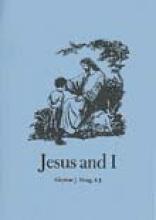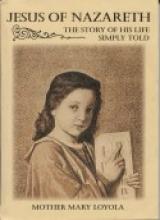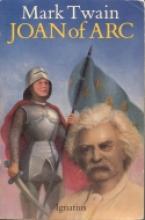No name
Jesse Tree Ornament Kit from Illuminated Ink
Jesus and I
Jesus and I is organized into very short lessons that lend themselves to direct, oral teaching and discussion. It is designed to be used BY the teacher WITH the student, not by handing the book to the student to read and fill in answers by himself. The book begins with several pages of prayers that we should know by heart. The lesson titles are phrases from these prayers, and the lesson content explains that particular phrase. For example, the lesson titled "Angel of God, my guardian dear" explains Catholic teachings on angels. The lesson titled "And blessed is the fruit of thy womb, Jesus" explains the Incarnation. As the children memorize their prayers, they are also being taught what the prayers mean.
Each lesson begins with a narrative written in simple, short sentences. This is followed by the "How Many Can You Answer?" section of questions for the youngest students. Next are the "Can You Also Answer These?" questions for older students, which come from the First Communion Catechism in use when the book was originally written. The book ends with sections on "When I Go to Confession" and "When I Go to Holy Communion" followed by a summary of all of the First Communion Catechism questions.
1958 Imprimatur updated in 1978 with permission
Jesus Feeds Everybody!
Jesus Feeds Everybody! by Young-Jin Choi and Jung-Cho Kim, is an English translation of a board book originally published in Korea. The multiplication of the loaves and fishes came to life for Ramona. She loved this brightly illustrated book and I think she especially loved that it comes with a built-in ribbon handle for convenient toting.
A very happy Jesus, cute bunnies and lambs and its own handle ... Ramona was pleased.
I recently received a couple of new books from Pauline Books and Media and Ramona was taken with both of them. The books are this one, Jesus Feeds Everybody!, and The Easter Swallows by Vicki Howie.
Jesus of Nazareth
God establishes a relationship between himself and us. He puts himself within reach of our invocation. He enters into relationship with us and enables us to be in relationship with him. Yet this means that in some sense he hands himself over to our human world. He has made himself accessible and, therefore, vulnerable as well. He assumes the risk of relationship, of communion, with us. The process that was brought to completion in the Incarnation had begun with the giving of the divine name.... God has now truly made himself accessible in his incarnate Son. He has become a part of our world: he has, as it were, put himself into our hands. This enables us to understand what the petition for the sanctification of the divine name means. The name of God can now be misused and so God himself can be sullied. The name of God can be co-opted for our purposes and so the image of God can also be distorted. The more he gives himself into our hands, the more we can obscure his light; the closer he is, the more our misuse can disfigure him. Martin Buber once said that when we consider all the ways in which God's name has been so shamefully misused, we almost despair of uttering it ourselves. But to keep it silent would be an outright refusal of the love with which God comes to us. Buber says that our only recourse is to try as reverently as possible to pick up and purify the polluted fragments of the divine name. But there is no way we can do that alone. All we can do is plead with him not to allow the light of his name to be destroyed in the world.He elucidates the various Gospel stories from many angles, though certain patterns emerge. In many places, he discusses and refutes modern theories about the Life of Christ (many of which have the common thread of doubting the historical validity of the Gospels). These are usually the most difficult portions of the book to follow. I found it helpful to underline principal portions in order to keep a particular thread fresh in my memory. Brief notes on the various threads might also be helpful. He also references Eastern imagery from traditional icons and what we have learned from Tradition (from the teachings of the Church Fathers) about the various Gospel passages. This is a life-changing book. There are many stories, like the Transfiguration, that I had little understanding of to begin with and will never hear or think about in the same way again. I studied this over the course of a school year with a group of high school students. We studied approximately 10 to 15 pages at a time and discussed everything in depth. I don't think it's a book that most high schoolers could read on their own. Reading it in chunks together allowed us to delve into it more deeply (I'm certain that I got more out of it than I would have if I had read it on my own.) The discussions provided an opportunity to clarify confusing parts of the text (many times I was able to provide some helpful background info such as an explanation of a philosophical idea). The students really enjoyed the book and got a lot out of it. Besides the obvious benefits of the content of the book itself, they're now less intimidated by an "intellectual" book and understand that it's okay to just make a beginning in reading such a book and that it's perfectly normal to get more out of such a book every time they read it. For those who might be interested, I wrote a number of blog posts on this book while I was studying it. You can read them here.
Recently released in softcover by Ignatius Press (that edition includes an index!). They are also expected to release a study guide for this book in October 2008.
An audio version is also available through your local bookstore or from Audible.com
Jesus of Nazareth
There is no substitute for reading the story of Christ's life in the Gospels themselves. First hand sources are always the best, but this book can assist in developing a more complete understanding and familiarity with the life of Jesus. The author is obviously well-acquainted with the geography, history and culture of Palestine and its people and gives us many of these sort of details which are not explained in the Bible. She is also well-versed in the Bible - particularly Our Lord's life and the foreshadowing and prophecies of the Old Testament related to it. I found the details of how Jesus fulfilled the Old Testament prophecies particularly fascinating.
The story is very beautifully written and the events are related in terms of what we know from the biblical accounbts, relevant prophecies and considerations and meditations on why Our Lord did certain things and what He and others may have been thinking about each event.
Some may dispute the "Simply Told" aspect of the title because of a certain amount of antiquated language. Be assured that definitions given in the footnotes (at the bottom of each page)are very helpful. Footnoted scriptural references allow for a more easy comparison of the relevant passages from the original text. The author shows some reluctance (as seems rather common with authors of that time period) to discuss certain events connected with the Annunciation and the Incarnation such as Saint Joseph's thought of divorcing Mary when he found that she was with child and his reassurance by an angel in a dream.
I think this book would make a rather nice family read-aloud during Lent. We found it very nice (even for our six year old) when we read a chapter or two at a time (the chapters are rather short) and spent some time discussing events as we went along.
Jesus of Nazareth, Holy Week
Faith in Christ's return is the second pillar of the Christian confession. He who took flesh and now retains his humanity forever, he who has eternally opened up within God a space for humanity, now calls the whole world into this open space in God, so that in the end God may be all in all and the Son may hand over to the Father the whole world that is gathered together in him. Herein is contained the certainty of hope that God will wipe away every tear, that nothing meaningless will remain, that every injustice will be remedied and justice restored. The triumph of love will be the last word of world history. Vigilance is demanded of Christians as the basic attitude for the 'interim time'. This vigilance means, on the one hand, that man does not lock himself into the here and now and concern himself only with tangible things, but that he raises his eyes above the present moment and its immediate urgency. Keeping one's gaze freely fixed upon God in order to receive from him the criterion of right action and the capacity for it - that is what matters. Vigilance means first of all openness to the good, to the truth, to God, in the midst of an often meaningless world and in the midst of the power of evil. It means that man tries with all his strength and with great sobriety to do what is right; it means that he lives, not according to his own wishes, but according to the signpost of faith.
Joan of Arc
While I used Mark Twain's Joan of Arc as a read-aloud, I used Poole's version for the younger children. Also, the pictures and map really complimented Twain's book.
Joan of Arc
So who is qualified to tell this story? Another saint? A theologian? A soldier? What about just a good American story-teller -- indeed the best -- but a man with hardly any faith at all?
Mark Twain is most famous for his Mississippi River stories, Tom Sawyer and Huckleberry Finn. It is not well enough known that his own favorite of all his works was the life of St. Joan of Arc, told from the fictional perspective (but this is the only fiction in the book) of a childhood companion who accompanied her on her wars, and then smuggled himself into her trials as a court reporter and was the last to touch her hand before she died.
Mark Twain really loved Joan and he dedicated the entire fiber of his wonderful talent to telling her story. I see him in the year 1910, knocking at the Pearly Gates, and I see Peter's hesitation, for Twain was after all, something of an unbelieving old cynic. But over Peter's shoulder, I see a slight and mischievous lass tugging his sleeve and saying with a grin, "Let him in, now, let him in!" while a Voice thunders from the Throne, "Any friend of Joan's is a friend of Mine."
Read it yourself, silently or aloud to the family, and see if you don't agree.








